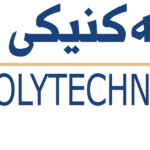- ئاسۆ قادر شیخ محمد
- aso.mam20@epu.edu.iq
- 0751 230 7020
- میدیای نوێ لە تەشەنەکردنی گوتاری رکوکینە لە هەرێمی کوردستاندا (Autosaved)-a586841c
-
پوختەی توێژینەوە
ناونیشانی ئەم توێژینەوەیە (رۆڵی تۆڕەکۆمەڵایەتییەکان لە تەشەنەکردنی گوتاری رکوکینە لە هەرێمی کوردستاندا) یە ، توێژینەوەیەکی وەسفییە و پشت بە رێبازی شیکاری ناوەڕۆک بەستراوە. داتاکانی تویژینەوەکە لە پەڕەی فەیسبووکی (6) ماڵپەڕی هەواڵی کە ئەمانەن (Politic Press، Diplomatic، Bwar Mmedia، Standar Kurd، Xor، مەلیکMalik) هۆکاری هەڵبژاردنی ئەو نموونانە، دەگەڕێتەوە بۆ ئەوەی، وێڕای ئەوەی پێگە و پەڕەی ناسراونین، بەڵام کاریگەرن، بە گوێرەی تێبینی کردنی توێژەر، کاریگەریەکەیان بۆ ئەوە دەگەڕێتەوە کە پابەندی ئەتیک و یاسا و رێساکانی رۆژنامەوانی نین. بەڵکو درێژکراوەی گوتاری لایەنە سیاسیەکانن، هەرچەندە لە خۆ پێناسەکردن هیچ کام لەو نموونانە ئاماژەیان بۆ ئەوە نەکردووە کە سەر بە حیزبێکی سیاسین، یاخود لێیانەوە نزیکن، بەڵام بە تێبینی کردنی بابەتەکانیان دەردەکەوێت، کە سەر بە چ لایەنێکن و لایەنگیر چ لایەنێک دەکەن و دژایەتی چ لایەنێکیش دەکەن.
نموونەکانی توێژینەوە لە ماوەی مانگێکدا وەرگیراون: لە 1.6.2022 تا 2022 1/7/، لە هەریەک لەو شەش پەڕەیەی تۆڕی کۆمەڵایەتی فەیسبووک، لە رێگای دروست کردنی هەفتەیەکی گریمانەیی، لە رێگای رێبازی شیکاری ناوەڕۆک داتاکان شیکاریان بۆ کراوە.، ئەم توێژینەوەیە، هەوڵێکی زانستیە بۆ زانین و تێگەیشتن، لە شێوازو ئاراستەو ڕادەی تەشەنەکردنی گوتاری رکوکینە لە تۆڕەکۆمەڵایەتیەکاندا. هەروەها کاردانەوەو ڕەنگدانەوەی ئەو جۆرە گوتارە لە سەر ئاستی کۆمەڵگە و لێکەوتەکانی لەلایەن وەرگرانەوە چۆنە و چەندە.
لە گرنگترین ئەو دەرئەنجامانەی ئەم توێژینەوەیە پێی گەیشتووە، گوتاری رکوکینە بە شێوازی جیاواز و لە سەر ئاستی جودادا کەڵەکە بووە، لە حالەت و دیاردە دەرچووە و خەریکە دەبێتە نەخۆشیەکی کۆمەڵایەتی، لێکەوتەکانی بوونەتە هۆکاری لێکترازانی سیاسی و کۆمەڵایەتی.
- Erbil Technical Administrative College
- Media Department
پێوەرە هونەرییەکانی وێنەگرتنی تهلهڤزیۆنی لە ڕاپۆرتە هەواڵدا )کەناڵی NRT و کوردستان 24 به نموونه)
- محمد عمر صالح علی
- mohammed.saleh@epu.edu.iq
- 0750 462 5686
- ماستەر(محمد عمر صالح)-9f3cab7f
-
پوختەی توێژینەوە
ئەم تۆیژینەوەیە هەوڵێکی زانستییە به ئامانجی زانینی ڕادەی پابەندبوونی كهناڵه ئاسمانییه کوردییهكان بە بنەما و پێوەرە هونەرییەکانی وێنەگرتنی تەلەڤزیۆنی، ئهم توێژینهوهیه توێژینهوهیهكی وەسفیە، كه میتۆدی شیکردنەوەی ناوەرۆكی تێدا بهكارهاتووه. كۆمەڵگەى توێژینەوەكە بریتیە له ڕاپۆرتە هەواڵی كەناڵە ئاسمانییە كوردییەكان، نموونەی توێژینەوەكە بریتییە لە ڕاپۆرتە هەواڵییەکانی هەردوو کەناڵى (NRT) و(K24).
كێشهی ئهم توێژینهوهیه بریتییه له زانینی ڕهچاوكردنی پێوەرە هونەرییەکانی وێنەگرتنی تهلهڤزیۆنی لە ڕاپۆرتە هەواڵدا. گرنگی ئهم تویژینەوە لەوەدایە كه وێڕاى گونجاندنی لەگەڵ ناوەڕۆکى ڕاپۆرتە هەواڵییهكاندا، هاوکاری میدیاکاران دهكات بۆ زیاتر تێگەیشتن لە چۆنیەتی وێنەگرتن و بەکارهێنانی وێنەی ڤیدیۆیی. هاوکات گرنگیدانى زیاتر بە گۆشەکانی وێنەگرتن لەساتی ئامادەکردنی ڕاپۆرت، یاخود هەر بەرنامەیهکی تهلهڤزیۆنى؛ بەشێوهیهک كه لەگەڵ تێکستی هاوپێچی ڤیدیۆکە بگونجێت و یەکتر بگرێتەوە. گرنگترین ئامانجهكانی توێژینهوهكه بریتیه له زانینى ئاستى بەکارهێنان و گونجاوی (گرتە) و (جوڵە) و (گۆشە)کانى کامێرا لە ڕاپۆڕتە هەواڵییەکاندا. دیاریكردنى ڕادەی پابەندبوونی كهناڵه ئاسمانییه کوردییەکان بە پێوەرە هونەرییەكانی وێنەگرتنی تەلەڤزیۆنی لەراپۆرتە هەواڵییەکاندا، بۆ شیكردنەوەی ناوەڕۆکى توێژەر (183) ڕاپۆرتهههواڵ له ههردوو کەناڵی NRT و کوردستان 24 به نموونە، له ڕێكهوتی 1-3-2022 تاکو 31-3-2022، كه توێژهر وهكو نموونهی شیكردنەوەی ناوەڕۆک وهریگرتووه.
ئەم توێژینەوەیە گەیشتۆتە کۆمەڵێک دەرئەنجام لەوانە: كەناڵە ئاسمانییە كوردییەكان تاڕادەیەكی زۆر لەکاتى ئامادەكردنی ڕاپۆرتە هەواڵییەكاندا پابەند نەبوونە بەو پێوەرە هونەرییانهی كه پێویسته لهكاتی وێنەگرتنی تەلەڤزیۆنیدا ڕهچاو بكرێن، گرتەی دەستپێک دیارترین ئەو هەڵانهن لە وێنەگرتنی ڕاپۆرتە هەواڵییەكانی كەناڵە ئاسمانییە كوردییەكاندا بەرچاودەكەوێت كه پشتیان بەستووە بە گرتەی(MEDIUM SHOTS) لەجیاتی(LONG SHOTS). هاوکات زۆربەی ڕاپۆرتە هەواڵی كەناڵە ئاسمانییە كوردییەكان پابەندنەبوونە بە كاتی ستانداردی ڕاپۆرتە هەواڵ كە بریتییە لە ماوهی (کەمتر لە 2:30 خولەک).
كلیلە وشەكان: پێوەرە هونەریەکان، وێنەگرتنی تەلەڤزیۆنی،راپۆرتە هەواڵ.
Abstract
This thesis entitled (Technical Standards for Television Filming in News Reports (NRT and K24 channels) as research models is a scientific effort, it is searching for the extent of the commitment of the Kurdish satellite channels to the technical and scientific foundations and standards.
This research, relied on the descriptive approach, using content analysis, and the research community included the news report of the Kurdish satellite channels, the sample of the community is the news reports of the (NRT) and (K24) satellite channels, and the research problem lies in knowing the consideration of the technical frameworks of television photography in the news report. In addition, the importance of this research is to increase the knowledge of journalists about understanding how television photography, and its relevance to the content of news reports; As well as paying attention to shooting angles when preparing the report or any television program; In line with the text attached to the video.
This and the research reached a number of results, and perhaps the most prominent of them are The Kurdish satellite channels have not adhered to the technical standards of television photography, and the most prominent of those errors that resurface in the Kurdish channels. It lies in the opening clips, which the channels relied on (medium shots), instead of (long shots). In addition, the majority of news reports in Kurdish channels did not adhere to the time limit specified for the reports, which is less than (2:30 minutes).
Keywords: technical standards, television photography, news reports.
- Erbil Technical Administrative College
- بەشی تەکنیکی میدیا
- راگەیاندن (میدیا) Media
- Esra Ahmed Khudadad
- Esra Ahmed Khudadad-7e762696
-
Over the past decades electronic circuit’s components have become more powerful and smaller in size to fulfil today’s demand for powerful devices with smaller and thinner size, which directly affects the heat flux generation where large amount of heat is produced within a short duration of time. A compacted cooling system is required to be devoted to cool down any electronic system or chip efficiently. In this study various parameters have been studied to design a double layered microchannel heat sink with the highest possible thermal efficiency. This study is a modification of an experimental study recommended earlier by numerous literatures. Forced convection heat transfer through a double layered microchannel heat sink has been theoretically studied using computational fluid dynamic method by ANSYS-fluent 2021 R2 software, focusing the study on geometry, coolant, heat sink material and type of fluid flow parameters. A new double layered microchannel heat sink (DL-MCHS) design is proposed with counter fluid flow condition and employing Al2O3-SiO2/H2O hybrid nanofluid with (%4) volume concertation, along with a copper substrate material for the heat sink body. The results showed that this design enhanced the thermal efficiency about (77.8%) as compared to the original experimental work under the exact same boundary conditions. Also, the differences in hybrid nanofluids thermophysical properties correlations were explored as there is two different classes of correlation that have different equation elements. The result of this comparison illustrated that nanoparticle size is an effective component in thermal conductivity and dynamic viscosity correlations, which helps develop better thermal properties and obtained lower resistance. Therefore, it should not be neglected, as smaller particle size improves the performance of the coolant.
- Erbil Technical Engineering College
- Mechanical and Energy Engineering Department
- Thermo fluids
- إبراهيم صالح إسماعيل
- ibrahim.salih@epu.edu.iq
- 0750 445 4005
- ماجستير في الاعلام - ابراهيم صالح اسماعيل-17ebc232
-
تتناول هذه الدراسة نظرية حارس البوابة الاعلامية في الاعلام الجديد وتحديداً في مواقع التواصل الاجتماعي، فإذا كانت نظرية حارس البوابة نظرية مستقرة الى حد ما بالنسبة لوسائل الاعلام التقليدية ، فإن مفهومها بالنسبة للإعلام الجديد قد تغير الى حد كبير، وسيحاول الباحث خلال هذه الدراسة مناقشة طبيعة علاقة نظرية حارس البوابة مع مفاهيم حرية التعبير والرأي من جهة، والاساءات والتجاوزات التي تحصل في ظل غياب دور حارس البوابة في مواقع التواصل الاجتماعي من جهة أخرى، كما إنه وفي عصر الفبركة وفوضى المعلومات والاخبار الزائفة والتضليل والتلاعب ، سيحاول الإجابة عن سؤال: هل نحن بحاجة لعودة دور حارس البوابة في الاعلام الجديد ؟.
تعتبر هذه الدراسة من الدراسات الوصفية، معتمداً على ( المنهج الوصفي ) الذي يعتبر من مناهج البحث العلمي البارزة في الدراسات الإنسانية،كما اعتمدت على (المنهج المسحي )، والذى هو أحد الوسائل الهامة في الدراسات الوصفية الميدانية، حيث اُستخدمت في الدراسة (استمارات الاستبيان الالكترونية) على عينة البحث المؤلفة من (98) من الاكاديميين المتخصصين في علوم الاعلام والاتصال في (21) من جامعات إقليم كوردستان والجامعات العراقية، فيما اعتمدت الدراسة في جانب أخر على استخدام أدوات (الملاحظة والمقابلة) للتعمق في حيثيات الموضوع ،حيث أجرى الباحث مقابلات مع مختصين في مجالات ( القانون و الفلسفة و علم الاجتماع و علم النفس ) لتبيان رأيهم في الموضوع المثار.
وخلصت الدراسة الى أن دور حارس البوابة مستمر في الاعلام الجديد ولكن طرأت عليه تغييرات، كما وإن للمعلومات المتاحة من خلال مواقع التواصل الاجتماعي، مصداقية قليلة وللأخبار جودة ضعيفة، وإن الإعلام المجتمعي يمكن أن يكون وسيطاً إيجابياً بين القيم الفردية وقيم المجتمع وتوعية المستخدمين، كما يمكن أن تشكل القوانين والانظمة وهيئات تحرير مواقع التواصل وثقافة الافراد، حراس بوابات في وسائل التواصل الاجتماعي، وإن دور نظرية حارس البوابة سيستمر في المستقبل ولكن بتمثلات مختلفة.
الكلمات الدالة: نظرية حارس البوابة، الاعلام الجديد، مواقع التواصل الاجتماعي، أساتذة الإعلام
- Erbil Technical Administrative College
- Media Techniques
- -


